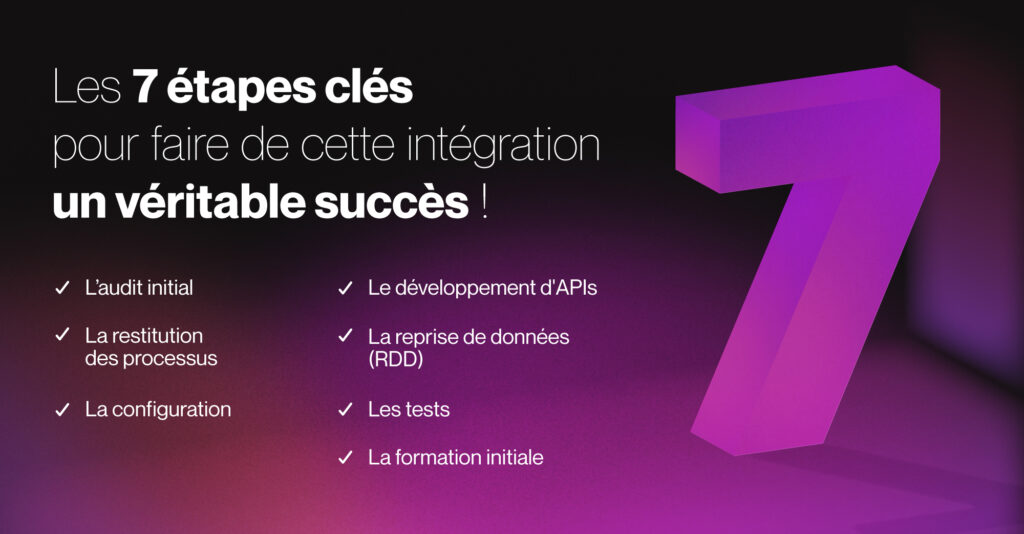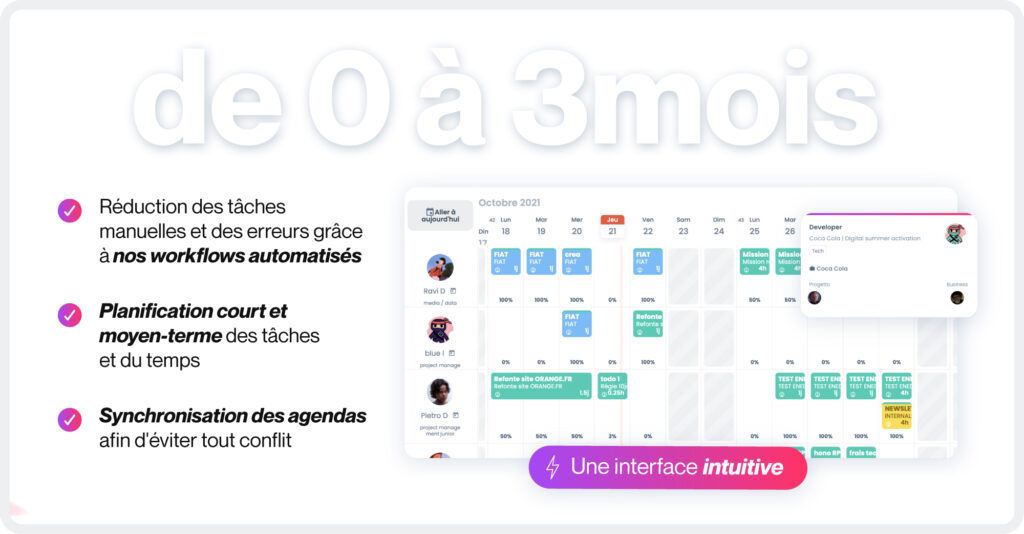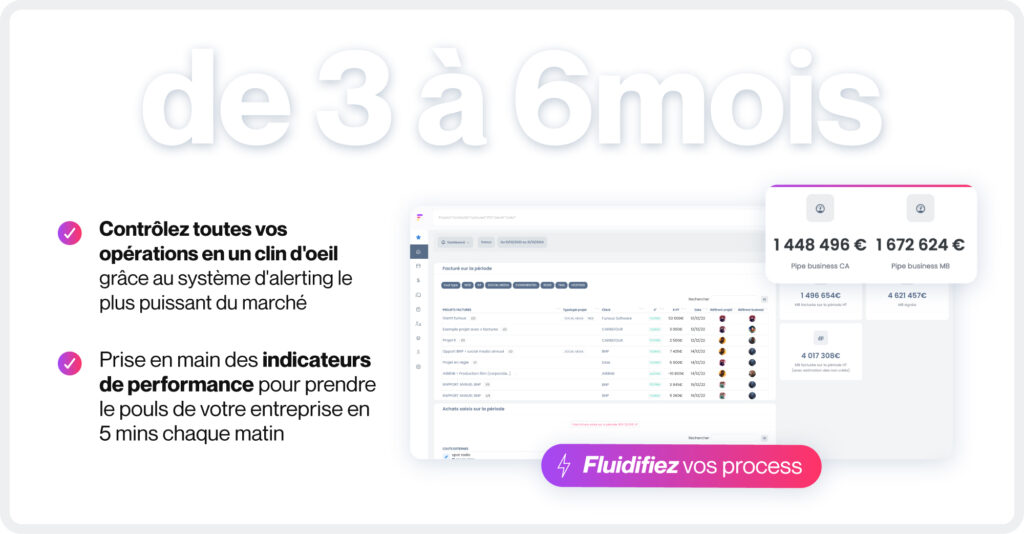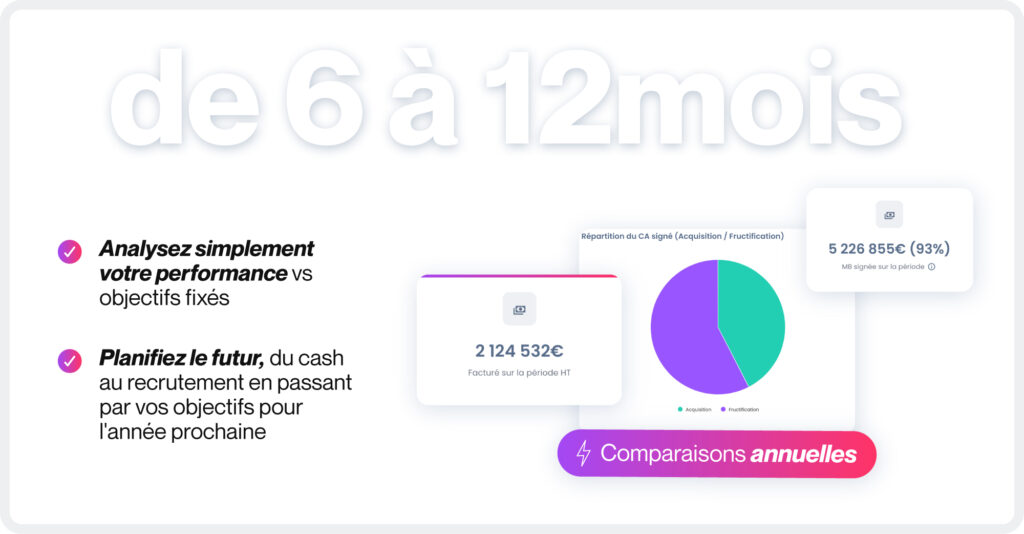Intro
In our last articleQuentin from SommeSi revealed his secrets for the successful integration of Furious in a 40-strong SME. In this article, we take things up a notch to understand the challenges of integrating an ERP in a company of 200 people. Quentin, our professional integrator, returns to guide you through the challenges and best practices.
Challenges
More employees… more challenges!
In a medium-sized organization, the approach is often bottom-up: projects are managed individually and, as long as they go well, the whole company follows! At around 200 employees, the approach becomes more pragmatic and oriented towards consolidated indicators.
Challenge #1: Understand specific expectations
The first and most important challenge is to understand precisely why the company has opted for Furious, and what improvements each department hopes to achieve over the old tool. It’s essential to identify the specific expectations of each team, and to ensure that the new tool will effectively meet their day-to-day needs.
The answer during integration: carry out an in-depth audit of each team that will be using the tool.
Challenge #2: Integrate existing processes
Companies with 200 employees often already have well-established tools and processes. The challenge is to integrate Furious in a way that enhances these existing processes. without disrupting current operations. In these structures, middle management is already present, and tools and processes are normally already in place.
The answer during integration: to train your employees as a team, so as to respond to their problems and not only integrate into the existing system, but also make up for what they have lacked up to now.
Challenge #3: Managing the human factor
In a structure of this size, there is usually a diversity of expectations and levels of support for change. That’s why it’s essential to maintain clear and constant communication to explain the benefits of Furious and get everyone on board.
The answer during integration: don’t do everything in a short space of time, follow up regularly and measure the progress and concrete benefits of the solution in direct contact with the teams.
Challenge #4: Meeting technical challenges
Finally, there are the technical challenges, notably the integration of Furious with existing information systems. Quentin points out that Furious often has to interface with a robust information system, managed by an Information Systems Department (ISD). In this context, APIs play a crucial role, and Furious stands out for its excellent performance in this area.
The answer during integration: set up a dedicated technical team to ensure API integration and compatibility with existing information systems, guaranteeing a smooth and seamless transition.
3 mistakes to avoid
Mistake #1: Trying to please everyone
In a company of this size, it’s tempting to try to satisfy every individual request, but this can lead to chaotic and inefficient deployment. Quentin stresses the importance of standardizing and streamlining processes. Trying to please everyone can get in the way of a structured, coherent framework.
Mistake #2: Accepting that some people won’t play along
To ensure successful deployment, total buy-in to the tool is essential. It is imperative that all employees, including managers, use Furious consistently. Quentin points out that failure to insist on uniform use can create fractures within the team and undermine overall efficiency.
Mistake #3: Neglecting change management
Successful deployment requires rigorous change management. Quentin explains that it is vital to clearly communicate the benefits of Furious and to support teams throughout the integration process. Neglecting this aspect can lead to resistance and difficulties in adopting the tool.

Key stages in deployment
Although the the key stages remain the same regardless of the number of employees, the size of the company involves some adjustments. The process may take a little longer, including additional pre-rendering sessions and more thorough preparation before critical phases. Nevertheless, SommeSi always attaches the same importance to fully understanding how each company operates, whatever its size and complexity. This often means interviewing more people to understand the specific needs of each department, but in the end, the steps remain the same.
1. Initial audit
The initial audit is the starting point for the integrator to explore the company behind the scenes. This starts with a thorough understanding of the customer. The SommeSi team conducts detailed interviews to grasp the subtleties of each company: how it works, who does what, work rhythms, and the specific needs of each department. This phase enables processes and information flows to be mapped, identifying specific needs.
2. Process feedback
After the audit, a feedback session presents a clear vision of the current processes and the objectives to be achieved. The aim is to ensure that everyone is aligned with the target organization and the processes to be put in place. This stage is crucial for validating working hypotheses and ensuring that teams are aligned on the next steps. A good process mapping facilitates Furious configuration, optimizes data recovery, customizes training and simplifies the next steps.
3. Configuration
Now is the time to set up Furious to perfectly match your company’s needs. Adapting the tool to the customer’s needs is a bit like tailoring a suit: every detail must be impeccably adjusted. Configuration is done in a participative way, directly involving company members. This pedagogical approach strengthens the involvement of teams, making them more committed and competent, which greatly facilitates the adoption of the tool.
4. APIs development
To ensure seamless integration, the company’s various applications must be able to communicate with each other. Furious, with its open API, is particularly flexible and compatible with many other solutions. For example, if the company already uses an absence management tool, an API can be developed to interconnect this tool with Furious, thus avoiding double entry and simplifying data management.
5. Data recovery
Most companies want to access their previous data to compare themselves with a reference period. This delicate step involves handling large quantities of data for import into the new system, ensuring a smooth transition.
6. Testing
Before deployment, Furious undergoes real-life testing to verify and validate that settings, rights and other configurations correspond to the customer’s expectations. This ensures that everything is in order before training begins.
7. Initial training
To ensure rapid and effective adoption of the tool, initial training is provided. This takes place in two stages: a theoretical part to understand Furious’s functionalities and how they can be integrated into daily work life, followed by practical cases where employees practice on fictitious scenarios before working on their own real data. Once the data has been integrated and the teams well trained, Furious can be officially launched in the company.
SommeSi's extra mile
After Go Live, SommeSi continues to provide ongoing support and training. Quentin stresses the importance of remaining available to customers, organizing dedicated workshops for key moments such as the first billing or the first production cut-off.
The 3 Best Practices
1. Dedicate an internal person to the project
Quentin stresses the importance of designating an internal person to be responsible for the deployment project. This person acts as a central point of contact, making progress on the day-to-day issues and gradually gaining proficiency with the tool. Although this person does not necessarily carry out the entire deployment, he or she plays a crucial role in facilitating communication and coordinating efforts between the in-house team and external consultants.
2. Expert support
According to Quentin, it’s essential to call on specialist integrators for a smooth and efficient deployment. Changing the central management and control tool of a 200-strong company is a delicate operation requiring specific expertise. SommeSi’s integrators have both technical and business skills, enabling them to ensure smooth integration and optimize the use of Furious.
3. Accepting and managing change
Successful deployment requires good change management. Quentin stresses the importance of accepting that certain practices need to evolve, and of being open to new ways of working. Change management needs to be well planned and executed to get staff on board and minimize resistance. By clearly communicating the benefits of the tool and involving users from the outset, it is possible to ease the transition and guarantee full adoption of Furious.
1 year on: what do users think?
When you implement Furious, you benefit from improvements in your operations from day one. But like a fine wine, you need to give it time to decant to reveal its full power.
In the short term

In the medium term

Long-term

In conclusion
Integrating Furious represents a crucial step for companies wishing to optimize their management and improve their performance. By adopting a structured approach and relying on the expertise of integrators like SommeSi, companies can fully exploit all Furious functionalities to achieve their objectives in an efficient and sustainable way.
Don’t waste any more time, try Furious today and enjoy the power of our ERP to make you more profitable!